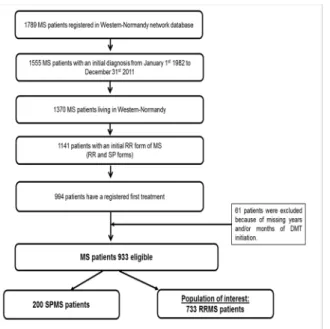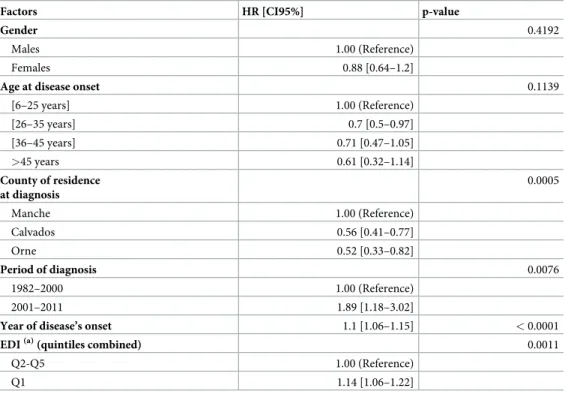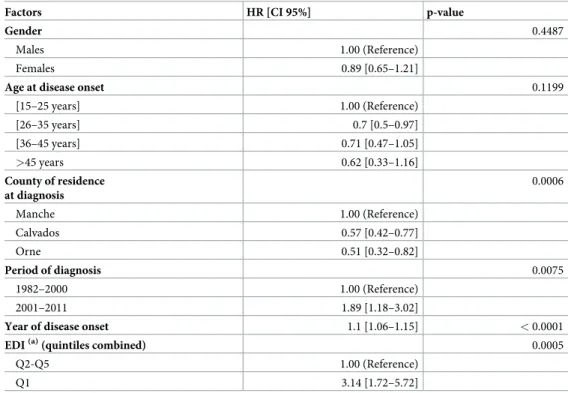Socio-economic status influences access to second-line disease modifying treatment in Relapsing Remitting Multiple Sclerosis patients
Texte intégral
Figure

![Table 1. Characteristics of patients diagnosed with RRMS during the period [1982–2011] in Western-Normandy.](https://thumb-eu.123doks.com/thumbv2/123doknet/14548057.536576/5.918.70.863.570.987/table-characteristics-patients-diagnosed-rrms-period-western-normandy.webp)


Documents relatifs
Root temperature and short term accumulation of carbohydrates in two maize hydrids at early
Modélisation du mouvement des chevreuils dans un paysage bocager simulé : premiers résultats, projets Nicolas Parisey, Marcellino Palerme, Michel Goulard, Melen Leclerc,
This first contextual study in France on the role of socio-economic factors in the access to renal transplantation or patients’ survival shows that, after taking into account
Nous avons d’une part rencontré vingt cinq personnes handicapées réparties comme suit : vingt deux personnes actives (parmi lesquelles sept femmes), dont seize en emploi (parmi
Image de pi` eces Monnaie royale canadienne -- Tous droits r´ eserv´ es c
N C 2 includes relatively medium and large lesions present at both the first two time points with co-presence of USPIO and Gd, where the Gd-enhanced lesions are focal and the
Despite promising clinical trials, intravenous immunoglobulin (IVIg) therapy in relapsing-remitting multiple sclerosis has met with uncertainties that might be
In a separate study, Munkholm et al (44) described the clinical course of inflammatory bowel disease in a regional inception cohort of 373 Crohn's disease patients diagnosed
